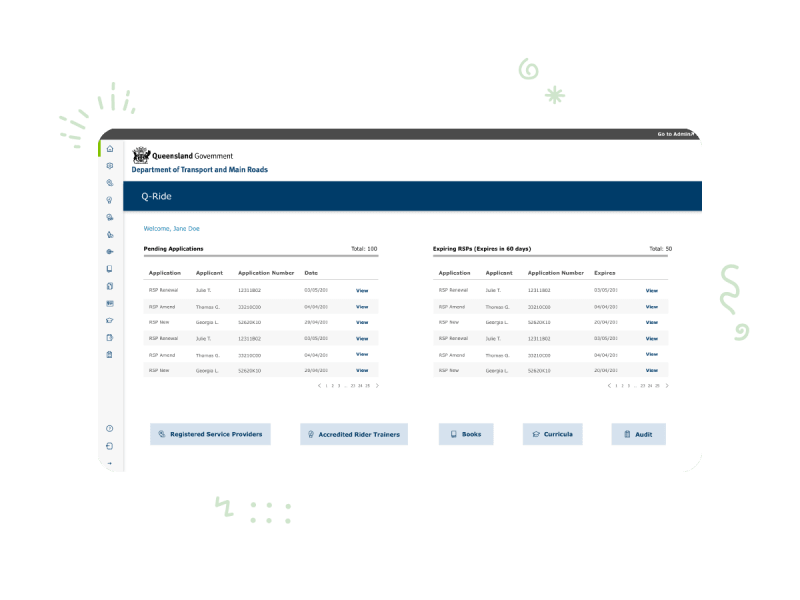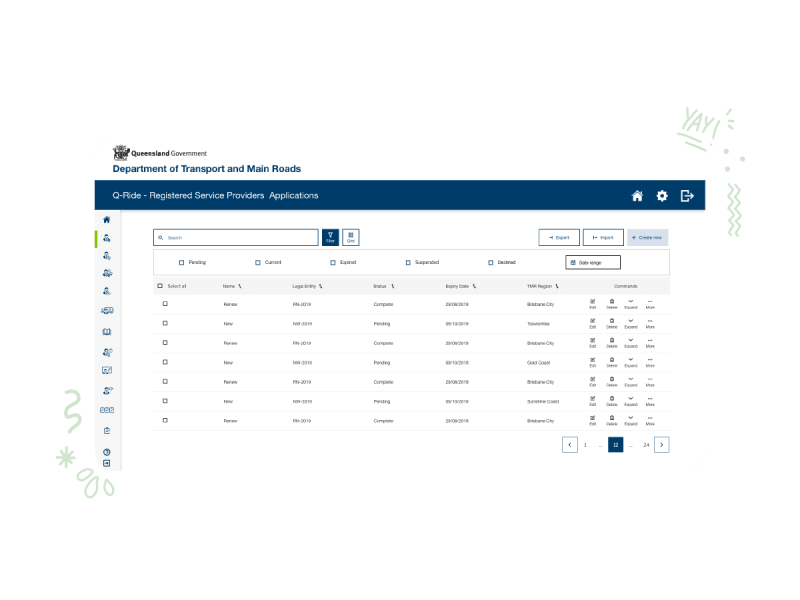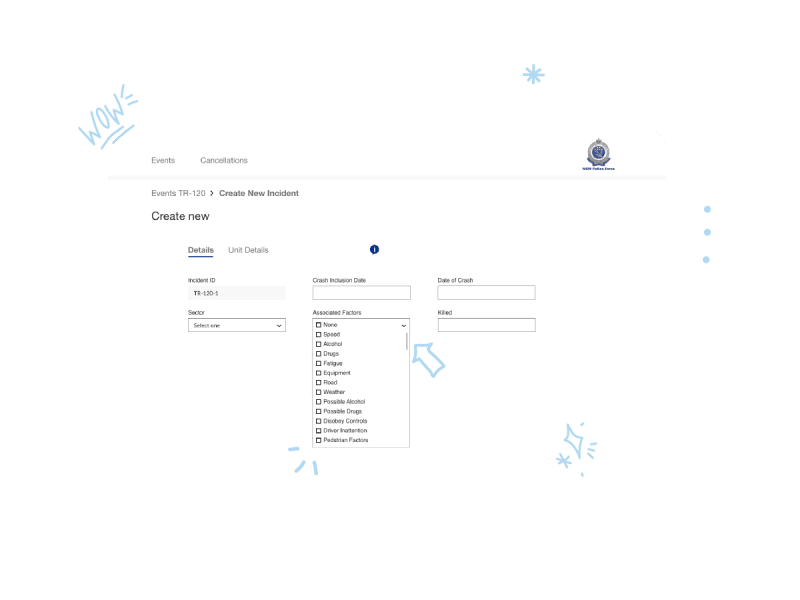The demand for modern, efficient, and secure IT solutions in government is rising as public expectations for digital services grow. People expect seamless and accessible interactions with government services, but many agencies face barriers, such as outdated legacy systems, budget constraints, and data security complexities.
Outdated IT doesn’t just slow down service delivery; it also frustrates employees, reducing productivity and job satisfaction. In fact, 62% of Australian workers reported dissatisfaction with their tools and IT systems, citing outdated systems, an excess of tools, and equipment not fit for purpose. This has created urgency for public sector IT to evolve—not only to meet citizen expectations but also to support a more efficient, motivated workforce.
As the need to modernise grows, adopting innovative solutions and partnering with specialised technology providers has become essential. Cloud platforms, agile methodologies, and secure digital infrastructures are key tools helping governments transition smoothly to modern, flexible platforms.
Modernising government IT services is a complex task due to several challenges, each requiring careful planning and specialised solutions.
Many government agencies rely on legacy systems developed decades ago, which are now incompatible with modern software and hardware solutions. These outdated systems are expensive to maintain and difficult to integrate with newer technology, leading to inefficiencies that delay service delivery and restrict the agency’s ability to innovate. Additionally, outdated IT systems can be frustrating and demoralising for employees who have to rely on them for daily operations. A recent report highlighted that workers often feel “despair” when forced to use legacy tools, which can negatively impact productivity, reduce job satisfaction, and lead to higher turnover rates. A successful modernisation effort involves not only transitioning to updated platforms but also ensuring that data and workflows are seamlessly migrated to avoid disruptions.
With the increase in data breaches and cyber threats, protecting sensitive citizen information has become a top priority. Government systems must implement multi-layered security protocols to ensure robust data privacy and compliance with regulatory requirements. However, transitioning from legacy to modern systems requires meticulous planning to avoid security vulnerabilities during the migration process, especially when moving data to cloud environments.
As citizen expectations evolve, governments are forced to adopt a citizen-centric approach, tailoring their IT services to meet the needs and preferences of the public. This shift often requires redesigning applications and services to improve user experience, accessibility, and ease of use. A focus on accessibility, simplicity, and mobile-friendly designs has become essential, ensuring that digital services are available to all citizens, regardless of technical ability or access.
Governments are constantly balancing the need to modernise with tight budget constraints. Digital transformation is a significant investment, and for many government agencies, securing adequate funding for these projects is a challenge. Strategic planning, prioritisation, and careful financial management are vital for making progress while remaining within budget. A phased approach to modernisation can also help manage costs more effectively, allowing agencies to implement critical upgrades in stages.
Despite the challenges, effective solutions and strategies can help government agencies modernise their IT infrastructure to meet today’s demands.
Government agencies face complex challenges in moving away from legacy systems and adopting modern, scalable platforms. One successful example of overcoming these challenges is the partnership between the Queensland Department of Transport and Main Roads (TMR) and WorkingMouse.
TMR Case Study
The Queensland Department of Transport and Main Roads partnered with WorkingMouse to migrate outdated systems to a modernised platform. This project enabled TMR to deliver more efficient, transparent, and accessible services, showcasing how targeted legacy migration can drive improved service delivery and operational agility.
Migrating Legacy Systems
Legacy platforms often present challenges related to data management, security, and continuity. WorkingMouse tackled these issues for TMR by creating a web application. This shift enhanced accessibility, security, and adaptability, ensuring the system could meet current needs and support future growth.
Collaborative Approach
Through an in-depth discovery phase, WorkingMouse collaborated with TMR stakeholders to understand the agency’s operational workflows and compliance requirements. This alignment ensured the new system integrated with TMR’s broader digital strategy. By employing Codebots technology, WorkingMouse accelerated development, delivering an initial proof of concept in four weeks and completing further refinements to prepare the solution for full production use.
Key Features and Impact
The TMR project highlighted best practices for government IT modernisation:
•Data Migration and Management: Seamless transfer of historical data made it accessible and secure within the
new system.
•Governance and Security: Multi-layered security features safeguarded sensitive data and adhered to public sector regulations.
•Extensibility: The modular structure of the application allows TMR to expand and integrate additional accreditation schemes, ensuring future readiness.
After nine months of development and over 500 feature tickets, TMR’s modernised system now improves service efficiency, integrates smoothly with other systems, and provides a strong foundation for future enhancements.


Governments are increasingly incorporating citizen feedback to design applications that are user-friendly, intuitive, and accessible across all devices. This citizen-centric approach ensures that government services are not only functional but also accessible and responsive to the needs of the public. By actively involving citizens in the design process, agencies can identify key pain points and areas for improvement, leading to solutions that are better aligned with user expectations and daily needs. Additionally, a citizen-centric design approach helps improve accessibility for users of all abilities, creating platforms that are inclusive and equitable.
This shift towards a more user-driven approach often involves continuous feedback loops, where government agencies test and refine digital services based on real-time user input. For example, some governments use online surveys, feedback forms, and user-testing sessions to gather insights and make iterative improvements. As a result, services are not only more intuitive but also more efficient, minimising the time and effort citizens need to complete tasks online, such as renewing licenses, accessing benefits, or filing documents.
Cyber threats are continually evolving, increasing the need for advanced security measures to protect sensitive government and citizen information. Government agencies handle high amounts of personal and confidential data, making them prime targets for cyberattacks. To address this, multi-layered security protocols, secure cloud environments, and regular security audits are essential in safeguarding data and ensuring compliance with strict data protection regulations. A “defense-in-depth” approach—where multiple layers of security work together to protect systems—significantly strengthens resilience. This approach includes firewalls, intrusion detection systems, encryption, and real-time monitoring to detect and address potential security breaches.
Additionally, governments are investing in cybersecurity training for staff, as human error remains a common vulnerability. Educating employees on safe data handling, phishing detection, and secure access protocols reduces the risk of internal breaches. Secure cloud environments provide agencies with additional protections, such as automated backups and disaster recovery, ensuring data integrity even in a cyber incident. Regular security audits and penetration testing help identify vulnerabilities and ensure that security measures are up to date, enabling governments to remain vigilant against the latest cyber threats.
The NSW Police Force partnered with WorkingMouse to enhance security and efficiency by consolidating and modernising its outdated Microsoft Access databases. Previously, critical data for the Fatal Crash database was fragmented across over 200 systems, creating vulnerabilities and requiring constant IT support.
WorkingMouse applied the firecracker migration method to transition these databases into a centralised,
web-based application with a .Net Core backend and React frontend.
This transformation included:
•Improved Security Protocols: By deploying the application in Police NSW’s on-premise environment, WorkingMouse ensured that sensitive data met strict security requirements. The system integrated with Active Directory for secure, seamless logins.
•Automated Data Input: An API connected to Police NSW’s Oracle database automated daily data updates, reducing human error and strengthening data integrity.
•Governance Controls: The solution included advanced governance controls and an encrypted, secure data structure that minimised risks and complied with regulatory standards.
This case study shows how a tailored legacy migration can not only streamline operations but also enhance security measures—an essential component for agencies handling sensitive information.


Cloud technology offers government agencies the flexibility and scalability needed to respond to changing demands. By moving to the cloud, governments can scale services up or down as required, accommodating peak usage times, or expanding services with minimal disruption. This flexibility is particularly valuable for agencies that experience seasonal spikes in demand or need to adapt quickly to policy changes. Cloud environments also enable centralised data management, improving collaboration across departments by making critical information easily accessible. In addition, cloud migration allows governments to leverage the latest technology, creating a future-ready foundation that integrates new features and security protocols seamlessly.
A well-planned cloud migration strategy, like the phased approach, minimises risks and disruptions by carefully preparing data and setting clear goals. This method helps ensure data integrity and continuity of service, reducing the likelihood of downtime or data loss during the transition. Agile development methodologies further enhance the cloud’s benefits by enabling frequent updates and incremental improvements. This approach allows government IT teams to continuously test, refine, and implement changes, ensuring systems remain current, secure, and responsive to evolving user needs. By combining agile practices with cloud technology, government agencies can build a resilient IT infrastructure that adapts to modern governance demands and enhances service quality.
Governments must implement cost-effective strategies to manage their digital transformation within budget constraints. Given the complex needs and limited resources of public sector agencies, balancing the investment in modernisation with fiscal responsibility is important. Careful financial planning, prioritisation of key upgrades, and phased project rollouts are effective approaches to ensure that funds are used efficiently. Additionally, leveraging open-source technologies, cloud solutions, and scalable platforms can reduce long-term costs by eliminating the need for expensive hardware and reducing ongoing maintenance expenses.
Modernising government IT services is essential not only to meet the evolving needs of citizens but also to support a motivated and productive workforce. Outdated systems can frustrate employees, leading to inefficiencies and lower job satisfaction. By prioritising digital transformation, agencies can enhance service delivery, reduce operational disruptions, and create a more positive work environment.
Although the journey comes with challenges, such as managing legacy systems, ensuring data security, and adhering to budget constraints, government agencies can overcome these obstacles by adopting agile, citizen-centric approaches, embracing cloud technology, and enhancing cybersecurity. Partnering with specialised technology providers allows departments to access tailored solutions, easing the transition to modern, efficient platforms. Through these efforts, government agencies can build a more adaptable, secure, and people-focused IT infrastructure, better equipped to serve the public and support their teams now and in the future.
Made with ❤️ in Milton, Brisbane (Meanjin) Australia.
WorkingMouse acknowledges the Traditional Owners and their continuing connection to land, sea and community. We pay our respects to them, their Elders, both past and emerging.










2025 WorkingMouse Pty Ltd. All Rights Reserved.